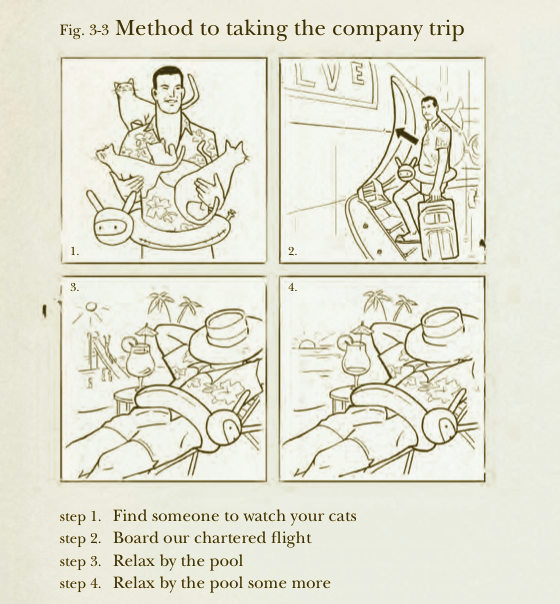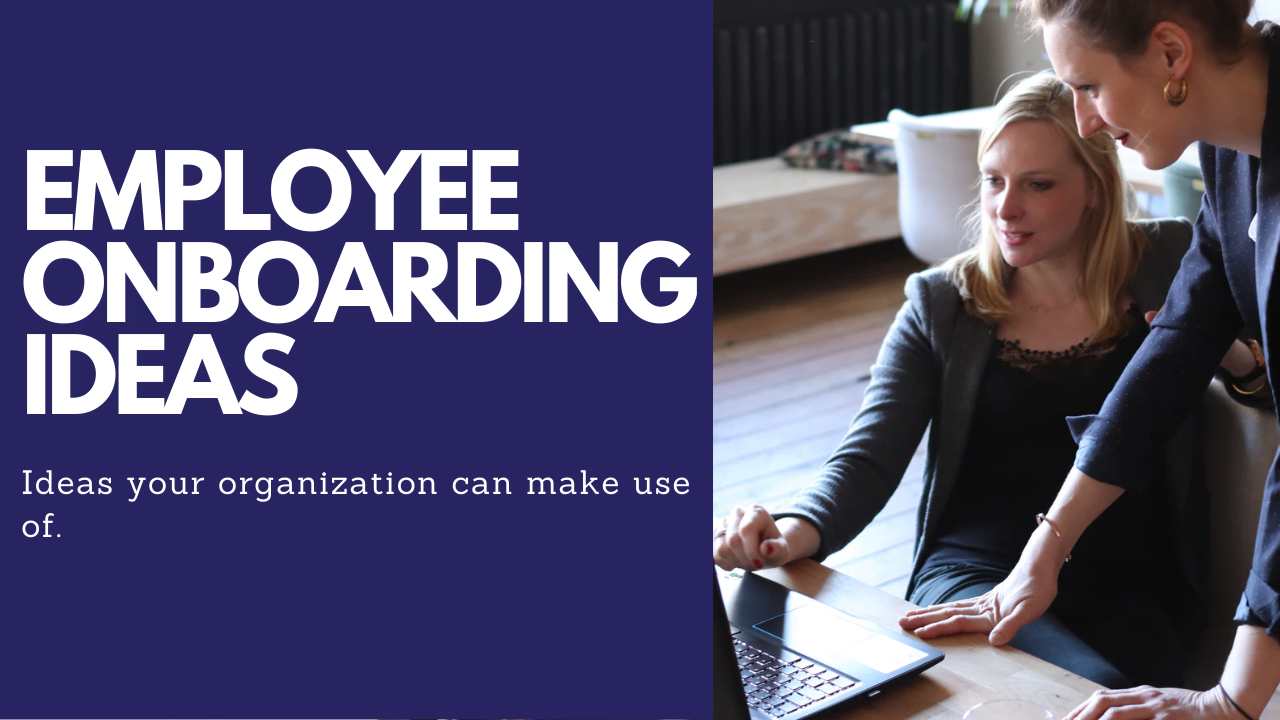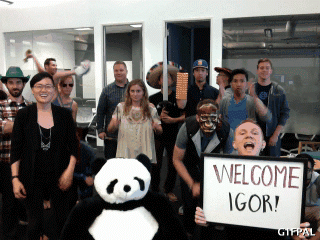Twelve Employee Onboarding Ideas Your Organization Can Use Right Now
How you welcome a new employee can make or break whether they stay long term, or look for a new role within months.
What you do for onboarding goes a long way in how that can play out.
In this article, we’ll look at the following:
A List Of Employee Onboarding Ideas:
(click the title below to jump to section).
- The Buddy System.
- The New Employee Welcome Kit/Gif(t).
- The Boot Camp (AKA Employee Rotation).
- The Scavenger Hunt.
- The Fun Employee Handbook.
- The Entry Interview.
- The 30, 60, 90, 180 Day Plans.
- Day One Contribution.
- Breaking Bread.
- Starting On A Friday.
- Starting Later In The Day (Like 11 A.M.)
- The Stay Interview.
Beyond this list, we will also cover the following:
- Reasons Why Organization Don’t Invest In Onboarding
- The Difference Between Good & Bad Onboarding
- Improving The Employee Onboarding Experience
1. Buddy System.
I’ve done a full post on the buddy system that goes much more in-depth about it which you can read here.
Here’s an excerpt about the buddy system at the company Buffer:
THE BEST ONBOARDING POLICIES FROM TOP TECH COMPANIES
Each new hire is given three ”Buddies” who play different roles in their six-week onboarding; a Leader Buddy, a Role Buddy, and a Culture Buddy. New hires are introduced to their buddies before they start and frequently communicate with them throughout their ”boot camp experience.”
Is The Buddy System Recommended For Your Organization?
YES!
I’m a big fan of the buddy system when it comes to onboarding activities for new employees. If you’re going to onboard new hires, the buddy system should be at the very top of your list.
Joining a new organization is like showing up to a party that’s been happening for years. It’s easy to end up feeling lonely while people are busy in their worlds. Having a buddy system can help to mitigate this.
Here are some more insights from an academic paper I came across: New Employee Onboarding Programs and Person Organization Fit: An Examination of Socialization Tactics
help guide the new hire through the socialization process.
___
…serial tactics were significantly negatively related to turnover.
The only organization I had a good employee onboarding process with had a buddy system. It got me up to speed.
I learned about the “unwritten rules” within the organization (and would’ve found out the hard way).
Looking again at Buffer:
I like the idea of having many buddies. You’re in contact with different individuals with different experiences at the organization.
Microsoft did a pilot program of using an onboarding program with great results.
The excerpts below come from the following article: Every New Employee Needs an Onboarding “Buddy”
They can also shed light on cultural norms and any unspoken rules that exist, which could lead to a much smoother transition into the organization.
At Microsoft, we found the more the onboarding buddy met with the new hire, the greater the new hire’s perception of their own speed to productivity: 56% of new hires who met with their onboarding buddy at least once in their first 90 days indicated that their buddy helped them to quickly become productive in their role. That percentage increased to 73% for those who met two to three times with their buddy, 86% for those who met four to eight times, and 97% for those who met more than eight times in their first 90 days.
Our research found that after their first week on the job, new hires with buddies were 23% more satisfied with their overall onboarding experience compared to those without buddies. This trend continued at 90 days with a 36% increase in satisfaction. Those with buddies also reported receiving more active support from both their manager and the broader team.
Drawbacks Of The Buddy System?
It’s possible a mismatch between the new employee and the buddy/mentor can occur. It could be a personality clash, or a skills clash.
In that case, finding a better buddy is the solution. Of course, this might be awkward to address.
Imagine that you’re starting at a new organization, and the buddy you’re matched up with isn’t a good fit.
Are you going to be bringing that up as someone new? Not likely.
That’s going to have to fall on the buddy. If they can recognize it, they can make the switch.
You could also have many buddies like Buffer does. In that case, if there is a mentor/buddy that doesn’t work out, the other buddy might.
What Can Your Organization Do For The Buddy System?
Have a buddy system. Get a system in place to determine who will get matched up with the new employee.
If you want to go the route of many buddies, look at an organization like Buffer which I mentioned earlier.
Looking for more on how to set up a buddy system at your organization?
I’ve done a full post on the buddy system that goes much more in-depth about it which you can read here.
During the Remote Workplace Success Summit, I talked about the Buddy System in regards to best practices for remote onboarding:
I also did a podcast where I talked about the importance of the buddy system which you can listen to here:
Transform Your Workplace Podcast: Fun at Work with Paul Lopushinsky
2. The New Employee Welcome Kit/Gif(t).
AKA Swag.
Everything is ready to go at their desk. The laptop, the hoodie, chocolate, wine etc.
This is one of the more fun ways to welcome new employees. The new employee welcome kit is very social media friendly. I’ve seen this pop up plenty of times on sites like LinkedIn when people post about starting a new job.
EMPLOYEE ONBOARDING 101: GIVE THEM CHAMPAGNE ON THEIR FIRST DAY
We’re excited to have them. If you’ve ever spent a lot of time trying to fill a role, you know how awesome it is to have that candidate you really want say “yes.” You’re already thinking about all the great projects they can take on and how much of an asset they’ll be to your business. Go ahead, show your excitement.
An unforgettable welcome to the team
I have to admit, a welcome gif is pretty amusing.
Is The New Employee Welcome Kit Recommended For Your Organization?
YES! BUT…
This is a fun way to welcome new hires. That said, it’s one that is more style than substance and would put less emphasis on it.
Don’t get me wrong, a new employee welcome kit/gif(t) is great to have to welcome new hires, but think of it as the icing on the cake. On the onboarding checklist, it’s low on the list.
The value of the welcome kit are much lower with the rise of remote work.
Drawbacks Of The New Employee Welcome Kit/Gif(t)?
As mentioned, this onboarding practice is more style than substance. Comparing this to say a buddy/mentor system, or a boot camp (which I’ll get to), I’d take those any day of the week.
Plus, what happens if the new hire doesn’t drink or a recovering alcoholic? The champagne or any type of booze becomes a bit more awkward.
What Can Your Organization Do For The New Employee Welcome Kit/Gif(T)?
Have this one in place. No need to go overboard. Have their stuff ready to go for when they arrive, and make them feel part of the team.
One of the worst things you can do is have them start, only for there to be confusion on where their desk is, or why IT doesn’t have their laptop ready.
3. The Boot Camp (AKA Employee Rotation).
“You come in, spend a week with the team who hired you and then spend the next four to six weeks out on rotation with other teams,” explains Etsy CTO Kellan Elliott-McCrea. “That has obvious benefits in that you get cross-trained on the organization and you learn what we’re doing, but it also has some non-obvious benefits, including the development of some strong personal ties. People you boot camp with end up being part of your support network at Etsy.”
Is The Boot camp Recommended For Your Organization?
YES!
It’s easy for organizations to get siloed off.
Devs with devs, sales with sales, support with support.
Shit happens. It’s natural.
Spending time with each division as you begin your job will help remedy that.
It develops empathy. You get to see what other people and divisions go through instead of hearing about it. It’s a great way to welcome new hires and get to meet many people around the organization.
An effective Bootcamp with job rotation can be one of the best onboarding activities. I’ve worked at an organization where devs spent the first few weeks answering support calls and emails.
That’s a great idea that should extend to everyone within the organization.
While I do have issues with their employee experience (as I’ve written about on my post about why I feel employees come before customers), Jeff Bezos does customer calls a couple of days a year, and gets executives to do the same as well.
Drawbacks Of The The Boot Camp?
Setting up and coordinating a good employee boot camp takes quite a bit of time and resources to do.
What Can Your Organization Do For The Boot Camp?
Building an employee rotation boot camp requires a lot of coordination to get right. Begin to build something from each division that gives a high level view of what each division does.
Here is an article that can help you get started: Setting up a Job Rotation Program in Your Company.
4. The Scavenger Hunt.
Bazaarvoice onboards new hires with unique “scavenger hunt”
The scavenger hunt started for me on Monday. Luckily three new hires started the same day, so we formed a team to help each other out. It definitely made it more interesting, because we were able to feed off of each other’s ideas to get our tasks done more efficiently.
I don’t think you can really understand the culture here until you’ve lived it. I learned a lot about Bazaarvoice as a company, and met a lot of people in different areas. There were tasks that aimed to teach new hires about the culture, like reading about the five stars and interviewing some winners of the Bazaarvoice Culture Awards.
But I think the most valuable part of the scavenger hunt was the high-level knowledge I now have of Bazaarvoice as a whole. The scavenger hunt helped me meet a lot of people at all levels of the company very quickly, and learn what they do. It was good preparation for my future here, because I won’t be afraid to reach out to other departments and people when I need an answer. That openness between departments and organizational levels is good.
Is The Scavenger Hunt Recommended For Your Organization?
IT DEPENDS.
This one is the most playful, silly and fun onboarding activities.
It depends on the play personality of the organization, and of the individual.
For more on the play personalities in the workplace, read our guide on How To Transform YOUR Organization Through Play At Work).
As far as a remote scavenger hunt over zoom? Here’s an article I found on how to run one.
Drawbacks Of The Scavenger Hunt?
This may not be the best fit for your organization. If you are a more traditional workplace, this will clash with your culture.
While I’m open to you in moving that direction, it’s understandable if it’s not going to work out. I don’t want you to create a “forced fun” onboarding activity. In that case, look to othering employee onboarding ideas on this list first.
What Can Your Organization Do For The Scavenger Hunt?
If it makes sense for your organization, set one up. Determine the best ways to address your values, your culture, and your teams with one.
5. The Fun Employee Handbook.
Valve’s ‘Handbook for New Employees’ leaked, hilarious illustrations included
However, there are other goodies, including key tidbits on why each desk has wheels (hint: so you can move it and work with others), and one of the best glossaries we’ve seen (“WFH — Working From Home. What to do if a single snowflake falls out of the sky.”)
Is The Fun Employee Handbook Recommended For Your Organization?
IT’S LOW ON THE LIST.
Sure, it’s something that’s fun, silly, and an informative way to welcome new hires. I see it like the employee welcome kit where it’s the cherry on top of the cake.
I wouldn’t be putting it ahead of things like a boot camp or a buddy/mentor system. Besides, it’s easy to get buried in the drawers of an employee’s desk.
Drawbacks Of The Fun Employee Handbook?
It’s easy to get focused and have a lot of fun working on this…only for it to get buried in the drawers of a desk. Plus, here’s what an ex-Valve employee had to say about the employee handbook.
What Can Your Organization Do For The Fun Employee Handbook?
Again, like the scavenger hunt, or the employee welcome kit, if you’ve implemented a lot more of the core employee onboarding ideas, then you can try throwing this one in. Make it fun, and make it tie in with your organization. The Valve Employee Handbook can be a good guide.
Check out my article on creating a new employee handbook on People Managing People.

This would explain why Half Life 3 never got made. Source: The Verge.
6. The Entry Interview.
If you want to view a more thorough guide to the entry interview, check out my post here: Why The Entry Interview Should Be Essential In Your Employee Onboarding.
The ‘Entry’ Interview: Why Wait Until Employees Leave?
Entry interviews have two primary benefits. First, employees feel valued from day one. Research by Wayne Boss and his colleagues demonstrates that when managers conduct these types of interviews, they build stronger, more productive relationships with employees.
Second, managers gain valuable insights for motivating employees. Armed with knowledge from entry interviews, managers can design more meaningful jobs for employees and support them in modifying or “crafting” projects that are developmental and engaging.
Is The Entry Interview Recommended For Your Organization?
YES!
Often overlooked amongst onboarding activities, the entry interview is one of the best.
Most organizations tend to overlook this one when they welcome new hires. You’re going to gain insights that you wouldn’t figure out until later (for better or for worse).
Drawbacks Of The Entry Interview?
If you’re asking the wrong questions or have ineffective outcomes, the entry interview won’t be very useful. That said, it should be easy to avoid with some prep work.
What Can Your Organization Do For The Entry Interview?
Conduct them after hiring. It’s a great way to welcome new employees and seems to be overlooked when it comes to onboarding best practices.

Source: Pixabay
7. The 30, 60, 90, 180 Day Plans.
I did a full post about The 30 60 90 Day Plan at People Managing People.
Is The 30, 60, 90, 180 Day Plans Recommended For Your Organization?
YES!
The best employee onboarding experience I had contained a 90 day plan that I reviewed regularly with my boss. It did a great job of getting me up to speed.
Drawbacks Of The 30, 60, 90, 180 Day Plans?
It can take a bit of time to draw up these plans. It’s possible that you end up drawing up a plan that’s not overly efficient for the new hire. It can depend on their role, seniority, or their personality.
What Can Your Organization Do For The 30, 60, 90, 180 Day Plans?
At the very least, have a 30 day plan when it comes to welcoming new hires. That will put you far ahead of most organizations who unfortunately don’t put the time into this.
To quote John Locke (the character from Lost, not the philosopher).
8. Day One Contribution.
Top 10 Employee Onboarding Programs
Note that the below is describing Facebook.
Within 45 minutes on day one on the floor, new employees are underway on their first projects, thanks to the intensive preparation undergone before they start. This shows that the company trusts in new hires and leaves them autonomy to create their own work early.
Is The Day One Contribution Recommended For Your Organization?
Yes!
It doesn’t need to be anything major (for example, the article above talks about how Facebook developers are pushing code within their first week), but getting them to contribute to something to the organization quickly can go a long way.
In Our Comprehensive Guide To Building Your Employee Onboarding Process, we mentioned the following in some goals you should have for onboarding:
- Making new employees feel welcome and part of the team.
- Make them feel like they have an impact.
- Get them up to speed and proficiency and not overwhelming them.
- Help them grow.
By getting them to contribute to something on day one, you’re helping them make an impact quickly.
Drawbacks Of The Day One Contribution?
It can be easy to throw a new employee too deep into the water, which ends up creating more problems.
It can be a case of one step forward, two steps back. I wonder how many organizations have tried this with developers, trying to copy Facebook (falling victim to FAANG Effect, which we’ve written about), and end up with a major fire that they need to put out.
What Can Your Organization Do For Day One Contribution?
Depending on the role, this could be many things. A developer, for example, can push out some code. It could be something to help make a customer’s day better.
There are many possibilities here, and again, it depends on the role, and your organization. Get creative! Get something that’s a quick victory, and not something that can lead to a situation of one step forward, and two steps back.
9. Breaking Bread.
One of the best ways to develop relationships is to break bread together. Unfortunately, most organizations will do this on the first day (taking the new employee out to lunch), and that’s about it.
–Cormac McCarthy, “The Sunset Limited”
At one organization I worked at, over 3 months, new hires had breakfasts with the co-founders. It was to see how we were doing and to get to know us better.
This went a long way in making us feel part of the organization, and made it easier to approach upper management.
Is Breaking Bread For Your Organization?
Yes!
It’s food! How could you possibly go wrong with it?
Drawbacks Of Breaking Bread?
Well, it’s possible the individual can’t have a good table-side conversation, or a super picky eater, and it can be intimidating for them if they’re having lunch with upper management.
What Can Your Organization Do For Breaking Bread?
Go beyond having the day one lunch. Set up several lunches over a span of a few weeks or months with new employees.
Depending on the size of your organization, it can be tough to arrange lunches with upper management. Taking steps to give a variety of lunches, with many people, can work instead.
Oh, and pay for it. You don’t need to go somewhere super fancy where Orange Juices are $12, but you can do better than Burger King or Subway.
With the rise of remote work, this one is still possible. Send them an order to their place for lunch, and have a video call. While not the same as in-person, it gets you in the right direction.

Note: Never watch The Sopranos on an empty stomach.
10. Starting On A Friday.
Starting a new role will have many anxieties. Many organizations have found success starting on a Friday. They can look forward to the weekend right around the corner.
Is Starting On A Friday For Your Organization?
YES!
Of all the ideas we’ve covered in this list, it’s one of the easiest to apply, and is a quick win.
If you’re in a hybrid model, Wednesday is also a day to consider for them to come to the office.
Why a Wednesday?
Studies have found Wednesday has been the most common day where most people go to the office.
This is a great way to get to meet others at the organization face-to-face which can do wonders.
11. Starting Later In The Day (Like 11 A.M.)
Here is one I recently stumbled across from this the following article: Employee Onboarding at Startups Is Broken – Here’s How to Fix It
This, like starting on a Friday, is a simple implementation, but can make a world of difference for a few reasons.
Having time for you and your team to settle in can allow you to wake up and give this your full attention. Sometimes 9am rolls around and you may have to put out a fire.
I’ve had a first day where things shifted as my manager had to put out a “fire”. Or at least what he saw as a fire, luckily he didn’t manage me for very long. That was a bit off-putting.
Most people are going to have the jitters the night before, even if you did a lot to reduce that anxiety.
There was one time where I didn’t sleep at all the night before. Luckily they had a great onboarding experience.
12. The Stay Interview
I’m putting this one last, as it’s something you don’t need to do right away, but a good thing to do 3 or 6 months down the line, and good to do on the regular.
Here’s my article on People Managing People that goes more in-depth about the stay interview.
What is a stay interview?
It’s a 1 on 1 interview with someone who has recently joined your organization. You’re finding out what has been working, and where improvements can happen.
In a way, it is the followup to the entry interview, and a precursor to the exit interview.
It’s a way of seeing how the onboarding experience has been going. They may feel that they received a bill of goods that didn’t deliver (if they’re honest and there’s that trust).
It’s a great way to bridge that gap that can occur. Onboarding has been a few months at this point, and they have more experience under their belt.
Asking them what’s been working, areas to improve, or barriers getting in their way are good questions.
Reasons Why Organization Don’t Invest In Onboarding
Here are some reasons that I’ve collected from others why their employers don’t invest in the onboarding experience:
“I often hear: “They should learn on the job like the rest of us had to”. This refers to a company that had a section opened for less than ten years. In the breaks room, we often heard war stories of how the first employees had to do everything themselves.”
“It’s just the way we’ve always done it”
“We tried this before and it didn’t work”
“They have no person to take charge and its a waste of time. For them, actual immersion in doing the job is the best training.”
“We need the employees to start work immediately.”
These are fascinating reasons why organizations don’t invest in the onboarding experience.
It’s common for onboarding at organizations to last a day or a week tops. If that’s the case, no reason why onboarding is such a small part of the life cycle at the company.
The one I find most fascinating is “They should learn on the job like the rest of us had to”. Where they talk about war stories of what the first employees had to do.
It sounds like something your Grandpa would say – talking about when he was a kid, he’d walk three miles uphill to get to school.
The fantastic blog lighthouse has a great article on why at most organizations, things break once you hit 25 employees.
This ties into the other point I saw brought up, that being “it’s just the way we’ve always done it”. It’s easy to fall back into old patterns.
As well, there is the classic case of “we tried this before and it didn’t work”.
Here are some of the common ways I’ve seen why these cases don’t work.
The Bait And Switch.
It’s common for organizations to sell a bill of goods to new employees. When they show up for day one, they end up with a VASTLY different experience than they were expecting.
Was there malicious intent involved? Most likely not (but if you are one of those organizations, shame on you).
From a great article I came across: Employee Onboarding at Startups Is Broken – Here’s How to Fix It
“People who are this talented get calls from recruiters all the time, and if they suddenly realize that they’re just a number or a cog in the wheel to you now, they have other options.”
It’s common to go through the recruiting and interview process, and they cannot wait to bring you aboard.
What happens on day one? Instead of feeling like they couldn’t wait for you to come aboard, you feel taken for granted. Like you’re an afterthought.
More common than you think. It’s happened to me a few times in the past. I’m sure it’s happened to you as well.
Not Enough Time & Resources.
I hear this often from smaller organizations. When they onboard new employees, it’s on an ad-hoc basis.
This can work, for a time. If you’re hiring a handful of employees a year, it’s manageable.
What happens when these organizations need to double or triple in size? Or what if they secure funding and have a larger budget to bring in more people?
They get caught flat-footed and not have anything in place for onboarding.
Building a quality onboarding process is a long-term investment.
It takes time to build one out, but once you have a solid foundation, it pays off in droves.
I like to use the analogy of the day trader vs. a long-term investor like Warren Buffett.
The day trader is reactionary. They get absorbed in all the little details and are at the whims of the market.
That’s how some organizations are when it comes to onboarding. They don’t have anything in place. If something major happens (mass layoffs, mass hiring), they can get caught flat-footed.
Compare that to Warren Buffett.
Warren Buffett set up solid fundamentals for his investing. He doesn’t get flustered by trends in the market. He’s not reactionary. He did a lot of work upfront and collected the dividends.
That is what I want your organization to do when it comes to your employee onboarding experience. I’d say $86 billion net worth as of writing is pretty good. Source: Wikimedia Commons
The Difference Between Good & Bad Onboarding
Whenever I work with organizations in regards to onboarding, or run workshops on the topic, I always start with two examples of one onboarding.
A Bad Onboarding Experience.
This consists of getting an email telling you about your start time, but that’s about it. Those first day jitters start to gather up.
You get to the office (or log into Slack/Teams/Whatever if you’re remote) and it seems like nobody knew that you were starting today.
Your manager is busy putting out a fire. During the interview process, they couldn’t wait for you to begin. Now it seems like you’re an inconvenience to them.
They dump a whole bunch of documentation for you to read, and you find out that your email isn’t set up.
Like being handed the Penske file.
Even before day one is halfway done, you’re wondering if you’ve made the right choice.
You get invited to meetings where people are dropping 4 acronyms in one sentence. You think they may be speaking in Klingon for all you know.
In a nutshell, everything was flying by the seat of your pants here. I ask people about how this made them feel, here are some notable responses:
Lots of acronyms being used results in not feeling a sense of belongingness.
The experience was awkward and it made me feel that the employee was not valued.
If that was me, I think I probably won’t last a year in that company if things don’t change.
I feel as if I have turned up at the wrong organization.
I thought multiple times “I don’t want other folks to feel this way”.
An afterthought, not feeling like you belong, awkward, not being valued, looking for the exit within a year, not wanting others to feel this way.

Sadly, these are all common in the world of onboarding. I’ve gone through some like this.
Here are some more I came across of people’s experiences with bad onboarding:
One time my onboarding training was this, “Here’s where you’ll be working”.That was it.I asked questions and I got an evil glare.
Now that the alternative workforce (freelancers, part-timers, etc.) is gaining steam, effective knowledge storage and transfer is more vital than ever—so I’m glad to see it mentioned as a way to help “fix” onboarding. I mean, the number of hours I’ve watched new workers and incumbent employees spend tracking down the most basic information is insane.
Tracking down the most basic of information. Feeling completely out of place is common. Evil glares from questions. Not a great start, no?
Let’s look at more…
Ah, the classic case of “Here is the documentation. Now read it.”
Throwing people straight into the lake without dipping their toes in the water is typical for organizations. I remember sitting in a meeting the first day on something I had less than zero clue about. Luckily I didn’t have to talk, just smile and nod politely.
From the other side what often happens is that someone random basically gets told “oh by the way, we have a new hire coming in tomorrow, on-board him”. So the new hire now has to deal with some overworked person that didn’t take having to spend a day on-boarding someone in his planning.
“My new manager met me at the door and dropped me off at my desk without even bothering to show me around or introduce me to a soul. I had to ask someone to help me find the restrooms. I didn’t have a minute’s worth of training when she dropped off a file for me to work on with no explanation at all as to what I should do with it. I seriously felt like George Costanza being handed the Penske file!”
Non-existent. Straight into the lake. Smile and nod politely. Getting told last minute that you have someone new coming in to help onboard. Not being told where the restroom is. What is wrong with these places?
Oh, and look at that, another mention of the Penske file.
Like being handed the Penske file.
What About A Good Onboarding Experience?
This isn’t the only story I tell.
Instead, we try a different day one. Before day one, you receive a 2-pager on what to expect for your first day, first week, and first month. Enough to reduce those day one jitters at a new job.
This day one makes use of many of the onboarding ideas covered in this post. Starting later, breaking bread, entry interviews, 30-60-90 day plans.
From day one, employees are more likely to feel they have joined the right organization for them.
When I ask how this experience made people feel, here are some notable responses:
The onboarding experience is often an employee’s first extended interaction with their new employer. The onboarding process should set the foundation for long-term success.
Welcomed, satisfied, comfortable, and most importantly not lost!
This made me feel like I was part of a team, a team with a winning mentality.
Excited and looking forward to what next day will bring, and looking forward continuing in the company.
Welcomed, setting a foundation for long-term success, not lost, part of a team, looking forward to what the next day will bring. It’s such a stark contrast from the poor onboarding experience.
Improving The Employee Onboarding Experience.
One thing that you want to do with your employee onboarding experience is collect feedback and find ways to improve it on the regular.
Determine The Goals Of Your Employee Onboarding Experience
This will vary depending on your organization, depending on size, on industry. Here’s a list of six goals that I find that can get you started in determining what your goals are:
- From day one, new employees know they’ve made the right choice in joining.
- Giving employees everything they need to know (but were afraid to ask).
- Ease them into your organization.
- Show them how your organization works (values).
- Show that their work matters.
- Show that you are a flexible organization.
The last one, depending on the role, is something that’s popped up since COVID. Schedule and location flexibility has become one of the most important aspects of what people look for in regards to white-collar positions.
Let’s break down each of these.
1. From day one, new employees know they’ve made the right choice in joining.
I’ve had some roles start where even before lunchtime has hit on day one, I wondered if I had made the right choice.
It seemed like they couldn’t wait for me to get started during the interview process. Now it was feeling like I was being taken for granted.
I only had one experience where it felt like I knew before lunchtime that I had made the right choice in joining.
Look above at the two different day ones. Notice the difference. Notice how the second is far more likely to get them to feel they made the right choice. Aim for this.
How you want them to feel on day one.
2. Giving employees everything they need to know (but were afraid to ask).
We are all going to have the first-day jitters of starting a new job.
It’s a new way that we’ll be spending 40 hours a week. Did you make the right choice? Will you get along well with your team? Will the work be meaningful?
There are so many things that you’ll want to know before you get started. You don’t want to be that individual who asks a million questions. From where to find certain documentation to how to use the coffee machine.
This is where having a handy 2-pager with an FAQ of what to expect before the first day will do wonders. Outline what they can expect for the first day, week, month, and quarter, and answer questions they may have. Instead of feeling shy about asking a million questions you may have in mind when starting a new role.
Oh, and give them the list of acronyms you use. Please.
I wrote a couple of articles for People Managing People that go into further detail here.
3. Ease them into your organization.
It’s easy and oh-so-common for organizations to chuck new employees into the ocean with no life jacket with their work.
That way can work…if you’re in the military. With most office jobs, it’s better for them to dip their toes into the water before submerging themselves.
There are so many aspects to learn, so many people to meet, so many values to take in – there’s no need to rush it all. Take your time and let them get settled in.

4. Show them how your organization works (values).
What are the values of your organization? How do you adhere to them?
How do you tackle certain problems and challenges? How do you deal with conflict?
How do you make use of teamwork? How is your organization structured?
Each organization will have different answers to the above. It may take time for a new employee to get used to the new values compared to where they were before.
Show them from day one what those values are, and how you adhere by them.
5. Show that their work matters.
I can recall some times in the past when good bosses said “Thanks, this is great work”, and even something as simple as that made such a difference in how I felt about my work and the organization.
You’d be surprised how many managers don’t do something like that.
You don’t need to go overboard, throw them a party, and get them cake (although I’m sure most people wouldn’t be against cake). Even something as simple as an email, a pat on the back, can go a long way.
When writing this point, I thought of this scene from The Wire. It makes a good point on making it about the work, and as a manager, how that rolls down. Note that there is some NSFW language, but it’s an HBO show, so that shouldn’t come as a shock.
6. Show that you are a flexible organization.
In the wake of COVID, the flexibility of Remote work has seen a great increase.
Some will want to be remote 5 days a week, some will want to be back in the office, and most will be somewhere in between.
The organizations that allow for this flexibility are going to do best in the long-term.
You can use your onboarding to help demonstrate this to new employees. You can do this right from day one by having them start later in the day, and having start on any day that isn’t Monday.
Obtain Feedback From Employees Who Recently Went Through The Employee Onboarding Process.
In the section above that looked at people’s experiences with onboarding, one point that came up a couple of times new employees took matters into their own hands creating processes to make it easier for those that joined afterward.
These individuals have an excellent idea of what went wrong, and what went right.
Starting with the most recent employees who went through onboarding is the best way to get feedback. You may think it’s well-designed, but if you’ve been at an organization for years, you’ve lost the beginner eyes that new employees have.
No, I’m not saying that you get these employees to build out the onboarding process for future employees. Get the feedback from them, and integrate it into your onboarding process. You’ll be able to collect more overtime as people come aboard.
Using The 5 Whys For Obtaining Feedback
When you are collecting feedback, you don’t just want to ask a question, and just take their answer at face value. You want to dig in deeper. The best way to do so is to make use of the 5 Whys.

How the five whys works is you ask a “why” question to their answer. Or, if you want to get more specific, you can ask a “what” question instead.
For example, if you ask them “What do you wish went differently about your onboarding experience?” and their answer is:
Some questions that you can ask to this could be:
- Why?
- Why do you wish the buddy system was more hands-on?
- What do you mean by that?
From there, they will give you an answer, and you repeat the process until you get to what you feel is the root cause. This can take you 5 Whys, or even more.
It’s a great technique that helps dig deeper into getting that real feedback. What we say, what we mean, what we do, and what we feel are all different. A tiny overlap exists amongst them. Using something like the 5 Whys will help you get there.
For more about the 5 Whys, Here is an article that goes more in-depth about it.
How Much Feedback to Collect?
If you’re a small organization that only hires a dozen people a year, it can be easy to collect that feedback.
That said, what happens if you’re hiring a dozen people by the week? At that point, it becomes much more difficult to collect all that feedback.
Do you need to ask every single person? No, you don’t.
Usually, all you need is to get feedback from five individuals.
This rule comes from the world of user experience design.
Why five?
When you test anything with five users, patterns should be emerging.
In testing with new users, you’re likely not getting any new feedback that differs from past users.
If you asked five people who recently went through the onboarding process for feedback, and you see something pop up over and over again (such as onboarding being too short, or they felt overwhelmed), you’re not going to get much more insight if you ask 10, 15, 20, 100 people.
What about if you’re not seeing patterns emerge? Then you can expand your pool of people you ask for feedback.
In an ideal world, you could collect as much as you could, but we have real-world constraints to deal with.
Get thorough feedback from a handful of individuals, and patterns should emerge.
For a more in-depth look into the rule of five for testing, Check out this article here on the subject.
Conclusion And Next Steps:
We have covered the following onboarding activities for new employees: (click the titles below to jump back to that section).
- The Mentorship/Buddy System.
- The New Employee Welcome Kit/Gif(t).
- The Boot Camp (AKA Employee Rotation).
- The Scavenger Hunt.
- The Fun Employee Handbook.
- The Entry Interview.
- The 30, 60, 90, 180 Day Plans.
- Day One Contribution.
- Breaking Bread.
- Starting On A Friday.
- Starting Later In The Day (Like 11 A.M.)
- The Stay Interview.
What can you do moving forward when it comes to onboarding best practices?
Make a list of what your organization is currently doing for welcoming new employees.
From the above list of onboarding activities for new employees, how many have you implemented?
How well do you execute them?
How long have you been doing them?
Are they giving a positive return, or are they potentially causing more issues than helping?
Talk with employees about their onboarding experiences (especially the more recent hires).
It’s better to do something anonymous here to get more truthful feedback. A new employee, if asked face to face, may say something along the lines of “it was great” to not rock the boat.
Send out a survey to get a better sense of their thoughts and feelings. You may find some of the onboarding ideas from this post may be mentioned to be implemented.
You can get insights into what is working, and what isn’t working, and new solutions that you can possibly implement to address these problems.
Review the list of onboarding activities for new employees in this article and decide what you want to implement.
Perhaps you already use a number of the employee onboarding ideas discussed in this article. Perhaps there are some on this list that you want to try and implement.
Remember, you need to determine what works best for your organization. I’ve given a list of onboarding activities for new employees that (more or less) can be universally used at any type of organization.
How you make use of it for your organization is up to you.
One of our core offerings at Playficient is helping organizations create a better employee onboarding process.
Want to work with us? Want to take some of these onboarding ideas and add them to your onboarding checklist?









